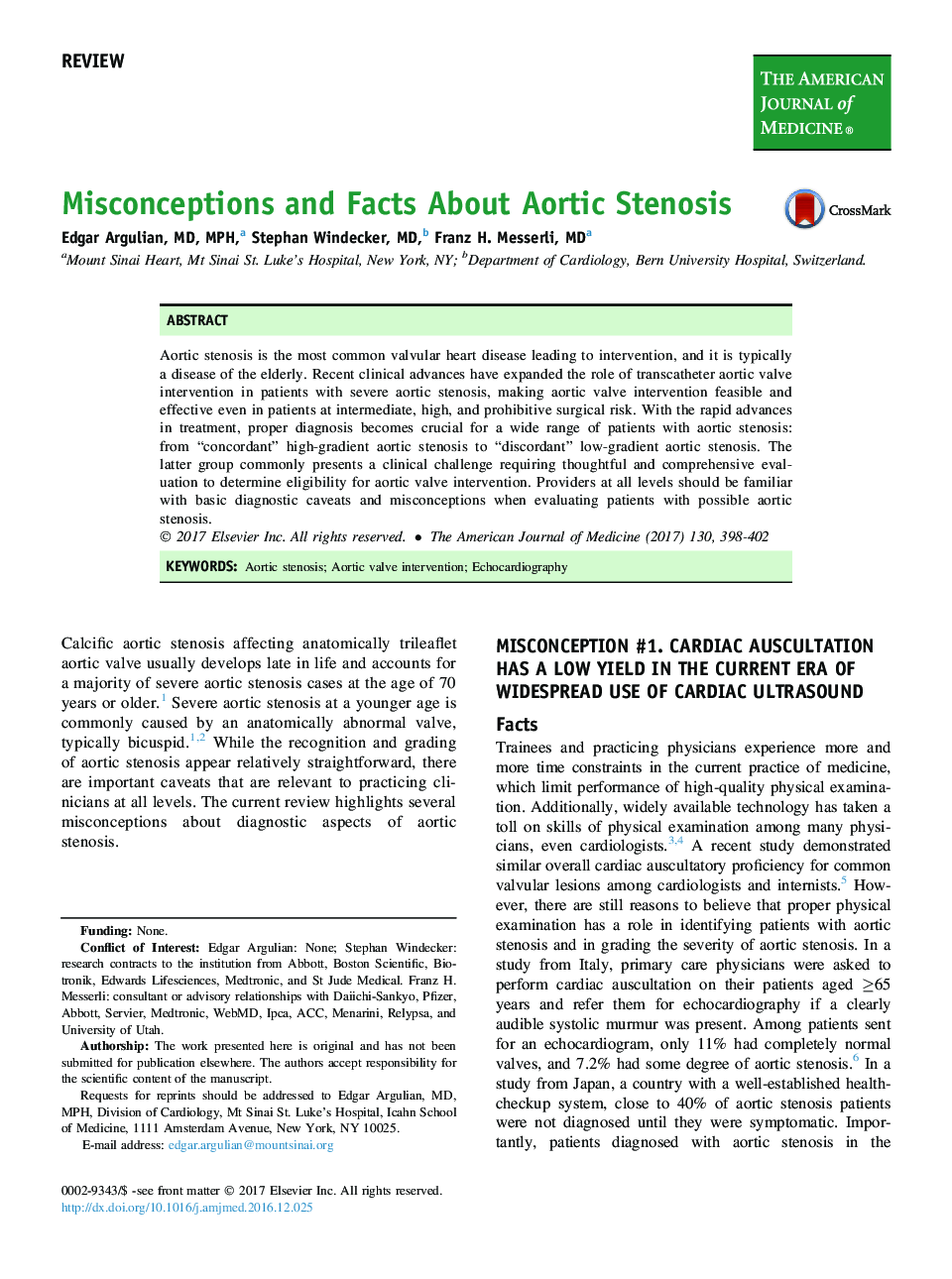| Article ID | Journal | Published Year | Pages | File Type |
|---|---|---|---|---|
| 5576685 | The American Journal of Medicine | 2017 | 5 Pages |
Abstract
Aortic stenosis is the most common valvular heart disease leading to intervention, and it is typically a disease of the elderly. Recent clinical advances have expanded the role of transcatheter aortic valve intervention in patients with severe aortic stenosis, making aortic valve intervention feasible and effective even in patients at intermediate, high, and prohibitive surgical risk. With the rapid advances in treatment, proper diagnosis becomes crucial for a wide range of patients with aortic stenosis: from “concordant” high-gradient aortic stenosis to “discordant” low-gradient aortic stenosis. The latter group commonly presents a clinical challenge requiring thoughtful and comprehensive evaluation to determine eligibility for aortic valve intervention. Providers at all levels should be familiar with basic diagnostic caveats and misconceptions when evaluating patients with possible aortic stenosis.
Keywords
Related Topics
Health Sciences
Medicine and Dentistry
Medicine and Dentistry (General)
Authors
Edgar MD, MPH, Stephan MD, Franz H. MD,
